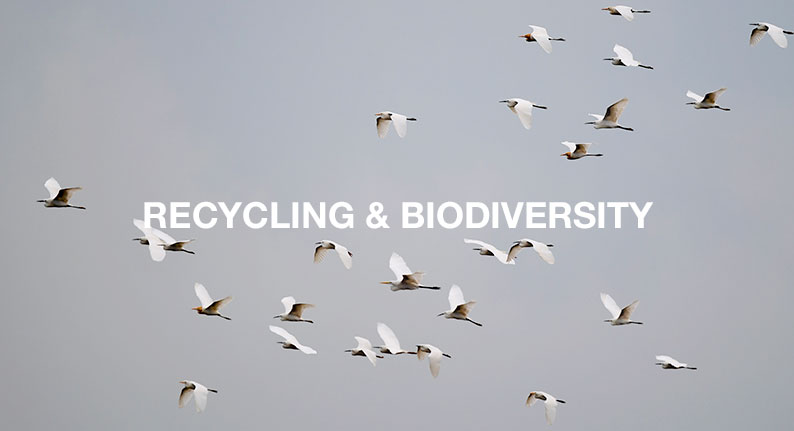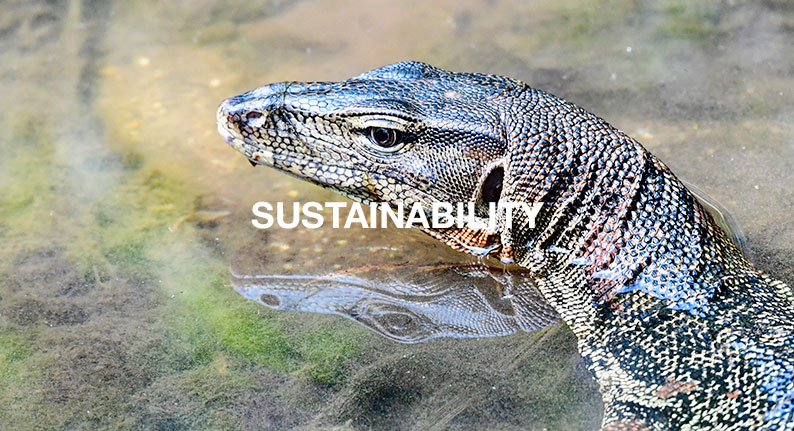Recycling and Biodiversity
22 May, 2020 8:03 AM / by Leon Traazil
How Does Recycling Benefit Biodiversity – and Why It Matters
When investigating only 19 trees in Borneo, researchers found 2000 different kinds of beetles! This indicates how remarkable biodiversity is not only in tropical areas. All around the world, we can so far observe an estimated 5 – 50 million animals. The high range of estimates stems from the fact that scientists still discover new animal varieties every day. On the other hand, we also observe more and more animal species dying out: Due to destruction of their livelihoods, excessive hunting or climate change, an estimated 11 000 – 58 000 kinds of animals die out every year!
This loss in biodiversity affects plants and animals alike: According to researchers, from the 335 000 different kinds of plants in our world, around 2,3 species disappear from our planet every year. This number sounds comparatively small, however, it is proven to be accelerated due to human activities!
Why Does It Matter
Every animal and every plant has its position in the ecosystem. When a species vanishes, this often has vast consequences on the whole: For example, insects are responsible for the pollination of ¾ of all the plants cultivated for human consumption. Bees, which are severely endangered by human activities such as excessive pesticide and land use, would heavily impact human beings when they die out.
Also, when plants rely on animals spreading their seeds so they can reproduce themselves, and these animals die out, they grow in accumulations more frequently. Animal species that lose their predators as they die out can become a severe plague which has backlashes on the natural environment as well on agriculture!
How We Can Preserve Biodiversity
The greatest challenge in order to preserve biodiversity for future generations is to abstain from the destruction of natural livelihoods of animals, especially islands and other areas particularly rich in biodiversity (e.g. rainforests). However, human population on the world is still increasing and the need for more materials, electricity and food continues to grow. In our opinion, more sound management of natural areas is needed if we do not want to lose our natural biodiversity. We need to set up conservation areas in regions known to be home of many different species of animals, effectively controlling access to these in order to protect animal and plant life there!
Conscious consumption, production and reuse of materials also support the preservation of natural habitats: For example, gold is often mined from natural areas that are very rich in biodiversity. Instead of destroying them by extracting new raw materials, we can recycle base and precious metals and reuse them for new products!
When we recycle toxic and hazardous waste, plastic packaging waste, e-goods in a safe way, we preserve ecosystems from chemicals and waste. By today, still a lot of countries do not recycle their plastic packaging waste and discard it into the natural environment instead, endangering biodiversity.
Through safe recycling operations, we can also divert more waste away from growing landfills worldwide that use up free natural space as well – not every landfill is as scenic and rich in biodiversity as Pulau Semakau. More than 700 species of animals and plants live there. Semakau landfill was even opened for the public and is a preferred place for birdwatching. Species like the Great-billed Heron, the tallest bird of Singapore amongst 66 others are found on Pulau Semakau. In the nearby waters, corals have been planted and visitors can see a huge range of marine life. This should, indeed, not cover the fact that more often than not, landfills severely endanger human and animal life.
Climate change is endangering biodiversity as well, because plants and fish that are specifically adapted to their environment often cannot live up to fast changes in temperature or predators that can reproduce much faster. Recycled base and precious metals show a remarkable lower carbon footprint than metals from natural mining. This shows that recycling supports biodiversity in many different aspects, and is one of the reasons why we advocate for a circular economic system.
Currently, we recycle toxic and hazardous waste of various kinds, as well as catalytic converters and packaging waste.
Does your waste contain base and precious metals? Does your company produce packaging waste or urban wood waste, unsure about how to find value in it? We can find an economically and ecologically more profitable way than just discarding it on the landfill.
Find more information about our recycling services here, and discover the potential of your waste and help us to preserve our earth’s rich biodiversity! If you’re ready to have a chat with us about how we can turn your waste to treasure, get in touch with us today.
Topics: Catalytic Converters, Corporate Social Responsbility, Environmental Offset, Metal Waste, Packaging Waste, Reimagining Sustainability, Sustainability in Singapore, Wood Waste
Written by Leon Traazil
Leon is the Head of Strategic Partnerships for Environmental Solutions (Asia).


